Syn.: Pentaphyllum concinnum (Richardson) Nieuwl. et Lunell
Family: Rosaceae Juss.
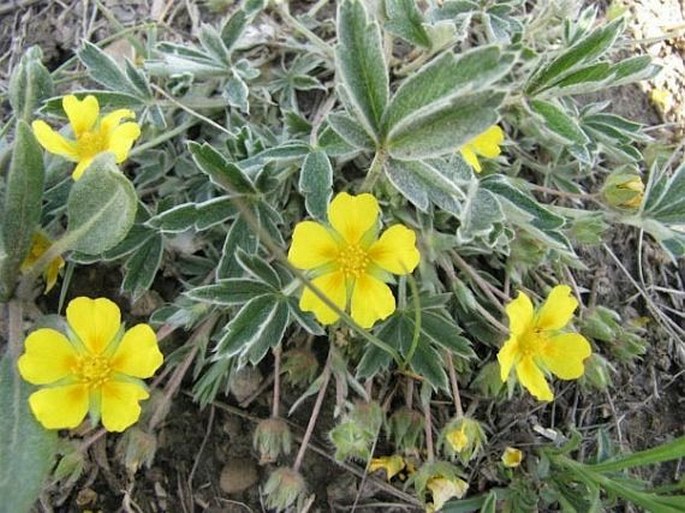
Distribution: Alaska, Alberta, Saskatchewan and Manitoba in Canada; in US, from Idaho to Dakotas and southward to New Mexico and California. Absent in British Columbia, Washington and Oregon.
Ecology: Dry open prairie, grassy and rocky slopes, foothills to subalpine, 300–3000 m elevations. Blooms in early spring, one of the first flowering plants.
Description: Perennial herb. Stems less than 10 cm tall, trailing or ascending from a taproot. Basal leaves pinnately to palmately compound, 5–9 leaflets, linear to lanceolate, 12–30 cm long, margins toothed, greenish gray above, white woolly below. Flowers in an open cyme, 2–5 in number, yellow,
6–15 mm across, pentamerous, stamens and pistils numerous. Fruit are achenes borne in clusters.
Note: This harbinger of spring was named by John Richardson, chief naturalist of the second Arctic Expedition of Sir John Franklin (1819–21) in 1823 from the plant he collected on the plains of Saskatchewan.
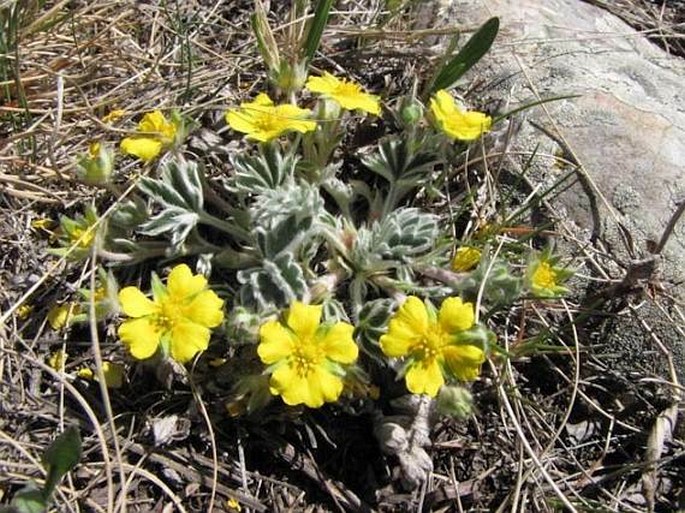
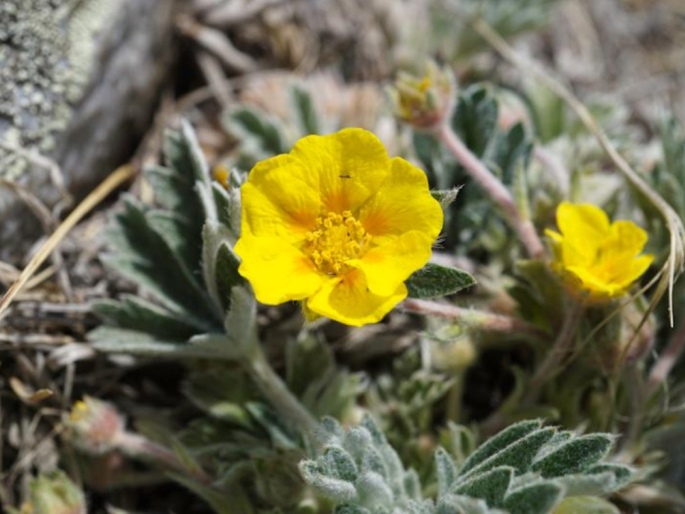
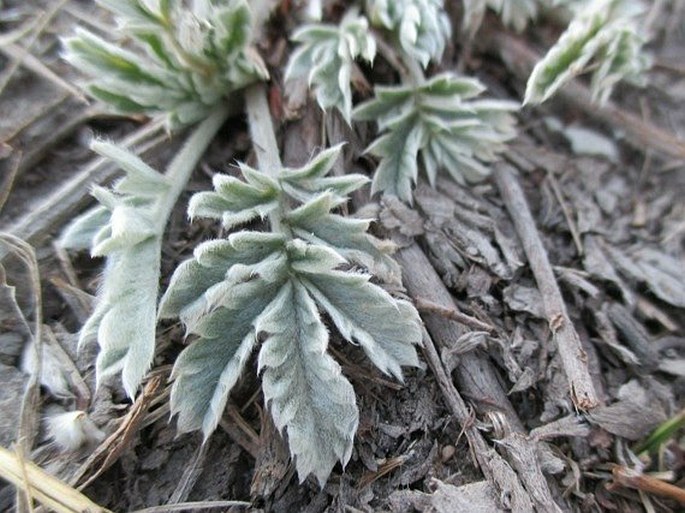
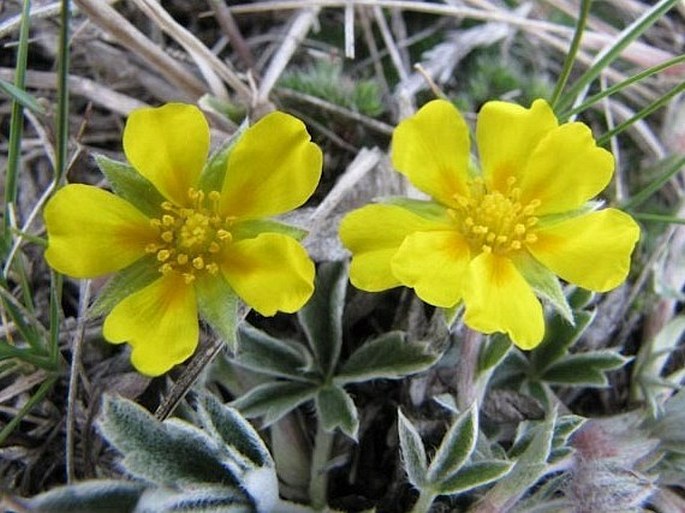
These images were taken in Canada, Alberta, Calgary, Confluence Park (April and September 2013).


